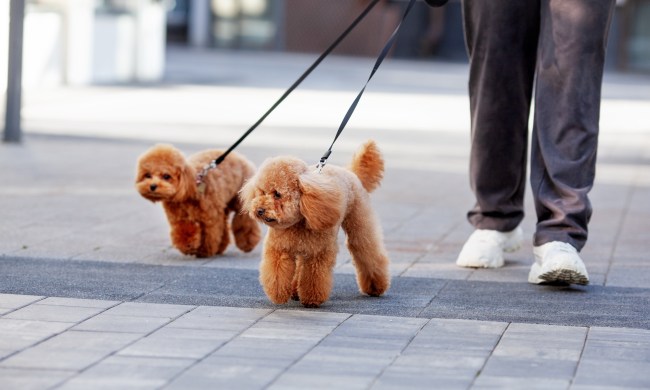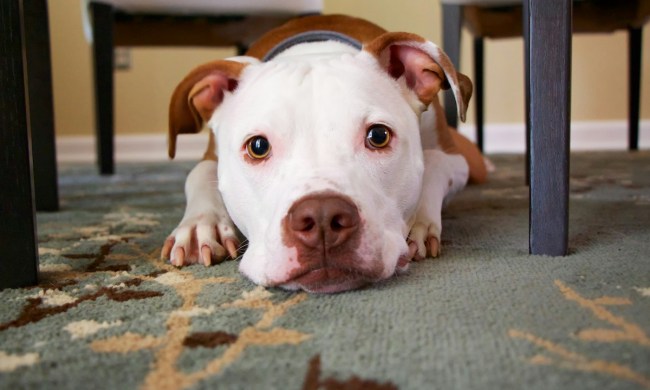The spookiest night of the year can be just as fun for your furry friend as it is for you or your kids, though it may take some planning to ensure a happy and safe pet on Halloween. From moving the candy to double-checking your decorations, there’s much to do! Luckily, we’re here to help you get a head start on all the fun with a few Halloween pet safety tips. Soon, it won’t seem so frightening.
Whether your fur baby has a wagging tail, a sweet purr, or colorful feathers, you can make this Halloween their best ever. Grab a pumpkin spice latte — it’s time to get spooky as we review eight essential Halloween safety tips that all pet parents should follow.
Don’t leave your dog outside on Halloween night — they may be frightened

Except for outdoor cats, who are more than used to the sights and sounds of the neighborhood, pets should stay inside on Halloween night. Hanging out in the yard makes it easier for a dog or other four-legged friend to escape out of excitement, curiosity, or even fear. And with Halloween being the ideal time for pranks and scares, you never know what your dog might be frightened of.
Even if your pup or pet doesn’t escape, they may be under immense stress if they find themselves alone in a yard while hearing something spooky. Instead, please keep them in a small space indoors where they have enough room to roam but not enough to destroy the house. If they have a dog crate they use as a safe space, this night will be the perfect time to use it.
Keep Halloween candy away from pets by whatever means necessary
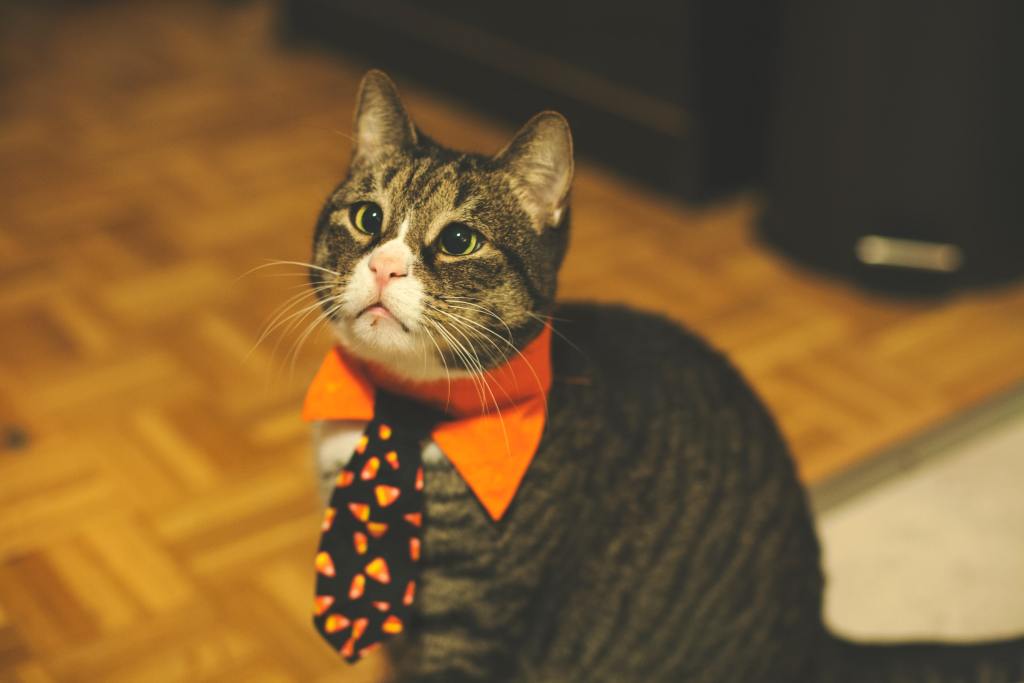
This time of year is full of delicious candy treats — for people, that is! Chocolate, gummies, and other candies are poisonous to pets, so you should be extra cautious to keep them somewhere your buddy has no chance of reaching. Storing candy in an airtight container is another smart option, especially if your furry friend can climb, fly, or chew through bags.
To be extra careful, take a minute to learn what ingredients are dangerous for your pets to consume. If you can, try not to buy candy with these ingredients. If you ever suspect that your dog ate some Halloween candy, there’s a lot you can do to keep the situation from getting dire. Be sure to act quickly!
Plan for knocks on the door with training, desensitization, or by moving away from the door

Hosting trick-or-treaters can be tough if you have a pet who goes wild when someone rings the doorbell. You can always ask your dog to spend a few hours in their crate or a small enclosed area (baby or pet gates are perfect for this), or you can keep your buddy on a leash and walk them to and from the door.
Doing the latter may help desensitize your pet, leading to calmer reactions in the future. However, it might be more of a hassle for you. This will be easier for couples or families, so ask someone to help you. It will be like a mini Halloween party.
Don’t force your pet into a Halloween costume purely for your enjoyment
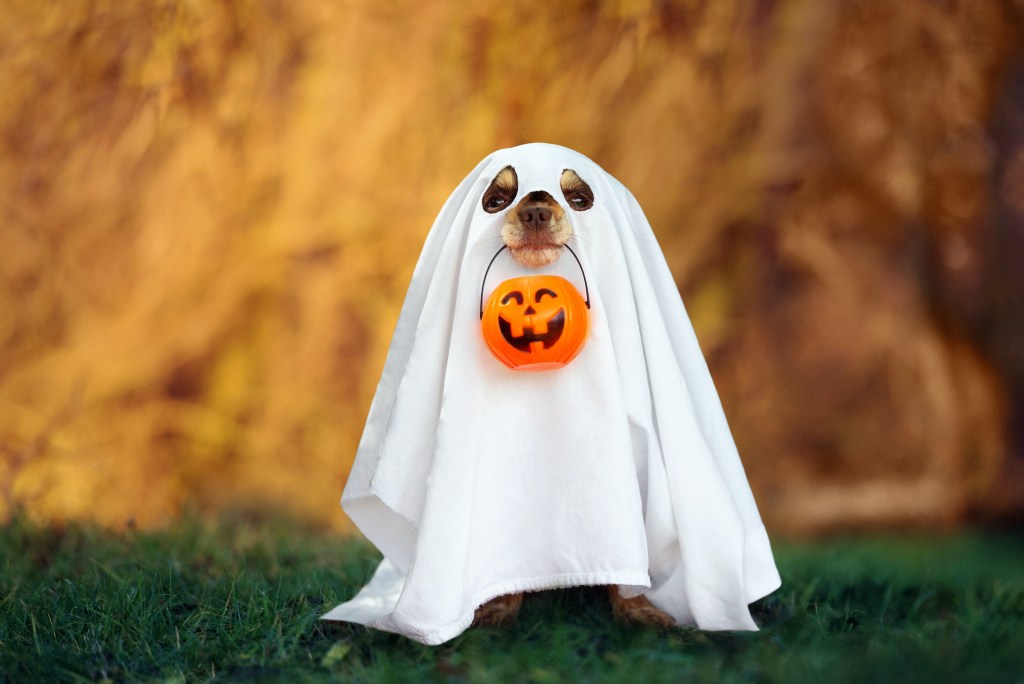
As adorable as they may look, your four-legged friend may not enjoy wearing a costume. It is what it is! A stressed-out animal can experience all kinds of mental and physical setbacks, including injuries from trying to escape their clothes in a panic, so it’s best not to force them into a dog’s costume on Halloween.
Costumes don’t provide any benefit besides making you smile, so it’s not worth your pet’s stress. Besides, you can always try a more comfortable alternative, like a bat wing dog harness or a cute Halloween bandana for your dog.
Make sure your pet is identifiable and visible, even if you’re not planning on taking them outside
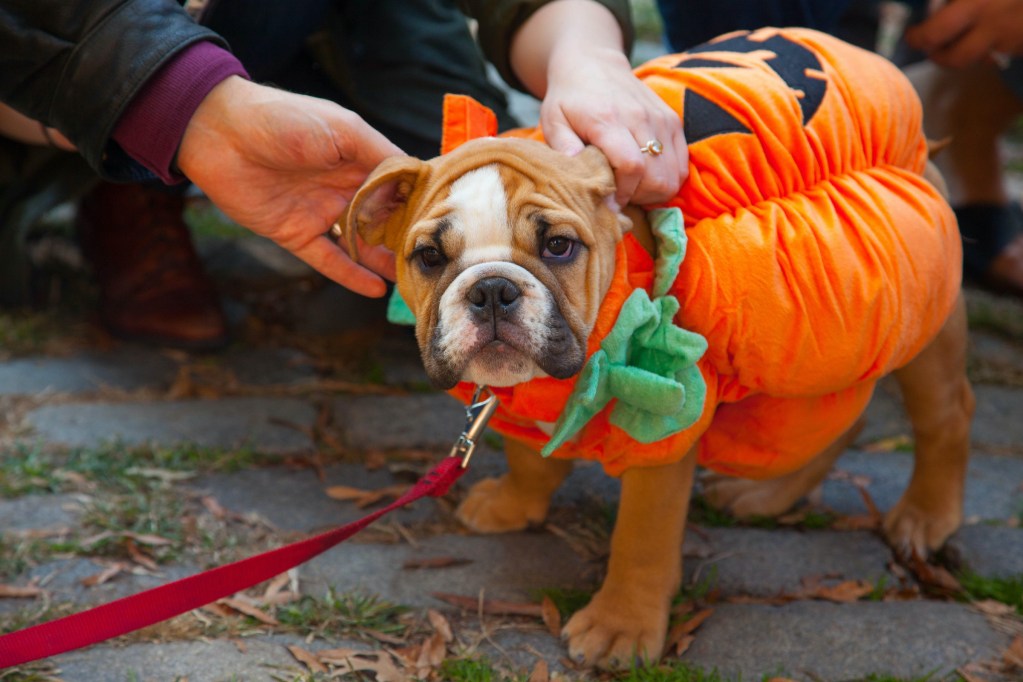
Whether your buddy will be leaving the house on All Hallow’s Eve, they should have a secure, up-to-date ID tag on their collar. This will help bring your pet home to you as quickly as possible in an emergency. Besides, tags can be a cute fashion accessory.
Whether you invest in a reflective leash, leash light, or another type of illumination, your dog should be easy for vehicles and onlookers to see. This is an extra-important step if you decide to bring your furry friend trick-or-treating — more on that below.
Take extra precautions if you choose to bring your dog trick-or-treating this Halloween

Gathering candy on Halloween night is a holiday staple, but it can get a bit chaotic with your pup around. With more distractions at the ready, it’s easier for your dog to get away with naughty behaviors — like stealing something icky off the ground.
You’re also increasing the likelihood of running into possible triggers when out and about, such as other dogs, large costumes, or even scary yard decorations. If your dog is easily startled, they may want to sit this one out.
Keep candles, decorations, and cords where teeth can’t reach

This tip is important in the weeks leading up to Halloween, as well as the night of, especially if you like to carve and light jack-o’-lanterns. Fire is a huge safety hazard for pets, so you should use real candles only if you’re confident your dog can’t reach the pumpkin or knock it over.
As for electric decorations, cords are the biggest danger. They’re easily chewable thanks to their small size, and if you’re not careful, they can be all too easy for curious jaws to find. Instead of risking a harmful accident, secure cords where your dog won’t be able to chew them, or at least tape over them for an extra layer of safety. If you’re worried about accidents, a “no chewing” spray or another deterrent method may help.
Keep prying paws away from jack-o’-lanterns
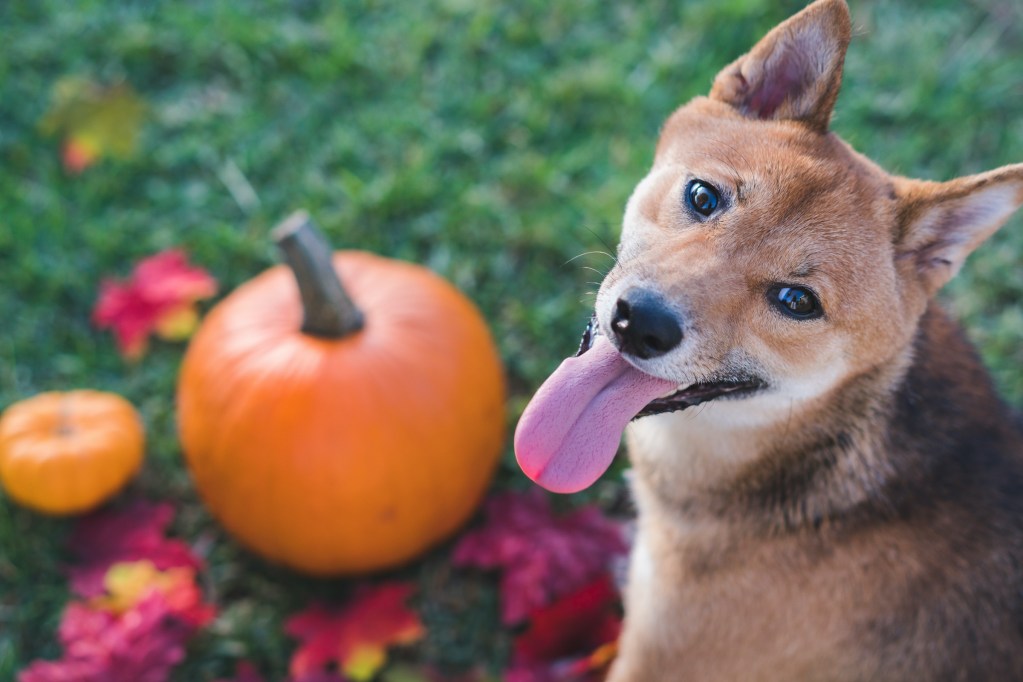
Pumpkins aren’t poisonous to dogs, cats, birds, or small animals, but that doesn’t mean jack-o’-lanterns are safe for pets to nibble on. While small pieces of pumpkin flesh and skin won’t do any harm (in fact, it contains a lot of healthy fiber), animals can easily overeat, causing stomach upset and diarrhea.
Additionally, some parts of the pumpkin and its plant, including stems, leaves, and seeds, are unsafe for pets to eat. That’s because they contain cucurbitacin, a toxin that causes gastrointestinal upset. Pumpkin leaves and vines are also covered in small hairs, which will irritate the mouth, throat, and stomach if ingested. Dogs can eat a few cooked pumpkin seeds, but raw seeds can make them sick.
If you keep these things in mind this Halloween, everyone in your family is in for a fantastic holiday. Just don’t forget to have fun, too! Whether you All Hallow’s Eve it out and about or snuggle on the sofa with your furry friend, be safe, and don’t forget to snap some photos!


